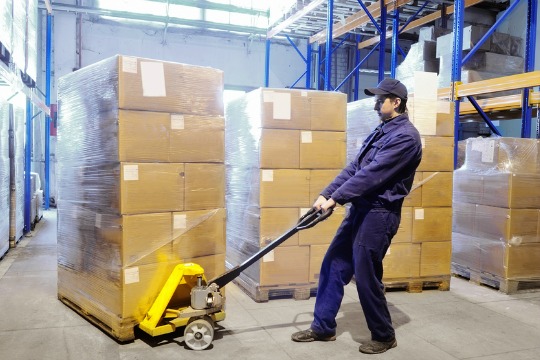How to properly prepare goods for LTL shipping
October 18, 2016

Before an LTL freight shipment gets loaded onto a truck and sent to its destination, it must first be properly prepared for shipment by the sender. Failure to consider best practices can result in bottlenecks, and in some cases, negatively impact your bottom line.
In this post, we take a closer look at how the following key areas play a role in LTL packaging and the preparation of goods for LTL freight shipping:
- Dimensions
- Documentation
- Packaging and Labeling
- Loading
Dimensions
LTL shippers should always measure the length, width and height of their shipment (be sure to round up to the next inch). Accurately measuring the dimensions of an LTL shipment is helpful to carriers (see below) and allows for more accurate freight quotes, which helps you to avoid costly adjustments that occur when dimensions are inaccurately recorded.
Why this step is important: LTL carriers fill their trailers with a number of shipments from various companies to maximize capacity. Freight dimensions is one of the primary factors used to determine how much freight will fit on a given truck.
LTL shipment documentation
When a carrier picks up an LTL shipment, they will ask for a completed bill of lading (BOL). Shippers are required to provide their name, the recipient’s information, date of the shipment, number of units being shipped, type of packaging being used, a description of the goods being shipped, freight class, dimensions, value and more in this document.
Why this step is important: The bill of lading (BOL) acts as a receipt of the goods shipped. The BOL also gives drivers and carriers all the details they need to efficiently process the freight shipment.
LTL packaging and labeling
LTL shippers are encouraged to load their goods onto standard shipping pallets or into crates prior to pickup. Heavier items should be placed on the bottom of the pallets or crates, while lighter items should be placed on the top. It’s also best practice to include at least one large label on each handling unit in the shipment.
Why this step is important: Freight is typically handled a number of times throughout the LTL shipping process. Properly packaged goods can be protected from bumps, drops and the adjacent freight along the way.
The bill of lading needs to be attached to the packaged freight, as well as any labels that would help the carrier know how to handle the package such as “Do Not Stack,” “Fragile,” “This side up,” and “Handle with Care.” These labels give drivers and dockworkers indicators as to how to move the freight without damaging it.
Shipment loading
All of the above tips contribute to a shipment that is ready to be loaded, if executed properly. LTL shippers should have the dimensions and key documentation in hand once their shipments are properly packaged and labeled for the carrier. These steps can help you avoid setbacks in the shipping process.
Why this step is important: In the LTL shipping world, the window for loading shipments onto trucks is much smaller than the two hours associated with loading a full truckload. LTL carriers are not required to wait for shipments to be prepared for loading. Shippers are expected to have the freight ready to go upon arrival of the carrier for pickup. If the LTL carrier has to return the next day, your transit time is delayed and you may be billed a fee for the second pickup attempt.
Final thoughts
Properly preparing LTL shipments can help goods get from point A to point B on time and fully intact, while reducing the likelihood of extra fees. Freightquote by C.H. Robinson's technology-driven self-service solutions can assist with preparing your LTL shipments for their journey. Contact us today for more info.
Do you have a shipment to book?
Image Credit: iStock
Topics:
Get Your Shipping Quote


